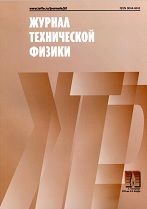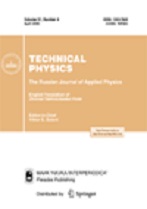|
This article is cited in 1 scientific paper (total in 1 paper)
III International Conference Physics -- Life Sciences
Interaction of weak electromagnetic fields (WEF) with living cells and organisms
Terahertz radiation sources and detectors based on optical microcavities embedded in the edge channels of silicon nanosandwiches
N. T. Bagraevab, P. A. Golovinab, L. E. Klyachkina, A. M. Malyarenkoa, A. P. Presnukhinac, N. I. Rul'ab, A. S. Reukovc, V. S. Khromova
a Ioffe Institute, St. Petersburg
b Peter the Great St. Petersburg Polytechnic University
c Almazov National Medical Research Centre of the Ministry of Health of the Russian Federation, St. Petersburg
Abstract:
Over the past 30 years, there has been a great deal of interest in the use of terahertz (THz) radiation in various fields, such as security systems, communications, and spectroscopy. In addition, THz radiation is increasingly being used in practical medicine; in particular, the potential of THz irradiation for influencing metabolic reactions together with controlling the most important biochemical processes taking place in the human body has been demonstrated. In turn, this has stimulated the development of compact sources and detectors of THz and gigahertz (GHz) electromagnetic radiation on the basis of development of silicon optoelectronics and nanoelectronics. Silicon emitters with the ability to control THz and GHz frequency modulation are created, which enables their use for effective therapy of demyelinating diseases of the central nervous system.
Received: 16.01.2020
Revised: 21.02.2020
Accepted: 03.03.2020
Citation:
N. T. Bagraev, P. A. Golovin, L. E. Klyachkin, A. M. Malyarenko, A. P. Presnukhina, N. I. Rul', A. S. Reukov, V. S. Khromov, “Terahertz radiation sources and detectors based on optical microcavities embedded in the edge channels of silicon nanosandwiches”, Zhurnal Tekhnicheskoi Fiziki, 90:10 (2020), 1663–1671; Tech. Phys., 65:10 (2020), 1591–1599
Linking options:
https://www.mathnet.ru/eng/jtf5178 https://www.mathnet.ru/eng/jtf/v90/i10/p1663
|


| Statistics & downloads: |
| Abstract page: | 58 | | Full-text PDF : | 24 |
|



 Contact us:
Contact us: Terms of Use
Terms of Use
 Registration to the website
Registration to the website Logotypes
Logotypes